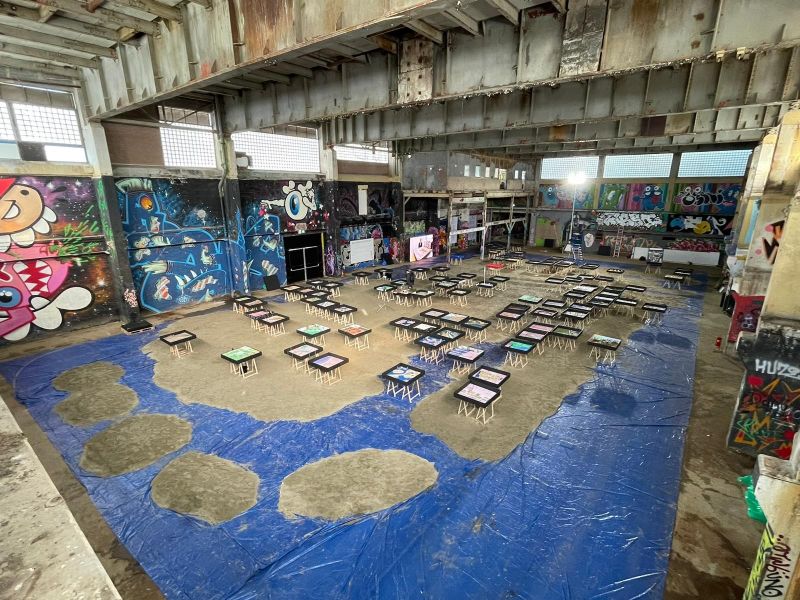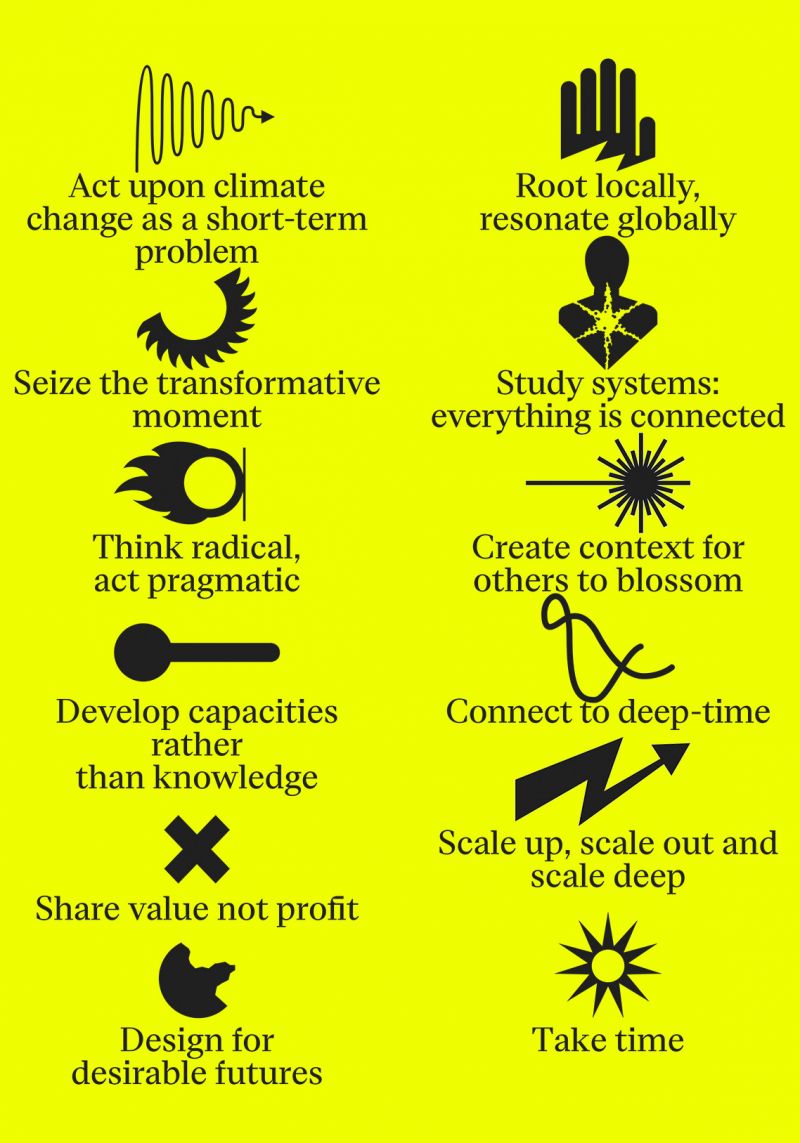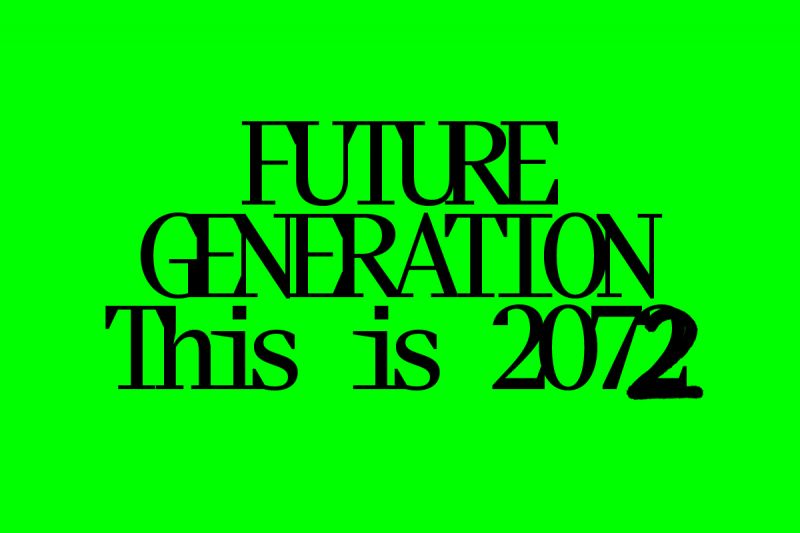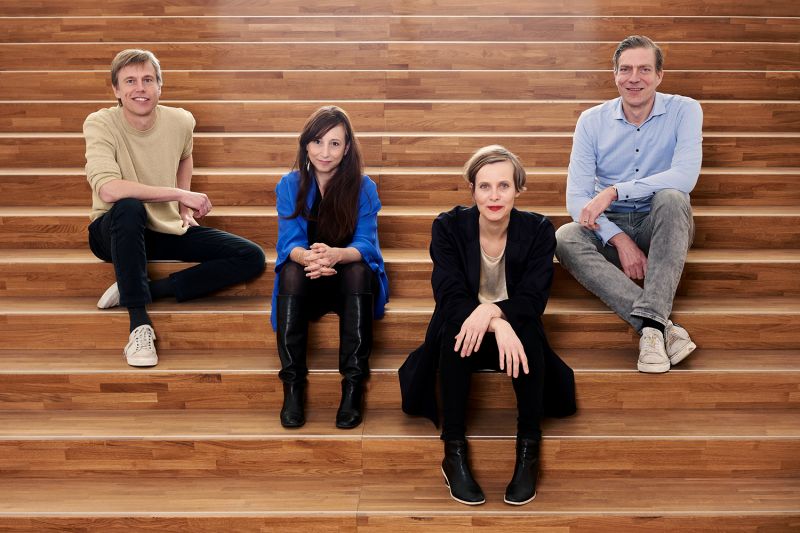IT’S ABOUT TIME
Exactly 50 years after the publication of The Limits to Growth, the 10th International Architecture Biennale Rotterdam (IABR 2022): IT’S ABOUT TIME, asks how architecture can respond to socioecological urgencies by considering time as a crucial factor in the design process.
The Limits to Growth
In 1972, the Club of Rome, an international group of academics, businessmen, diplomats, and industry leaders who were deeply concerned by the general conditions of life on planet Earth, published The Limits to Growth: A Report for the Club of Rome's Project on the Predicament of Mankind. The report was based on computer simulations – a novel technology at the time – generated by the Systems Dynamics Group at MIT (Cambridge, MA). The group studied the combined behavior of a set number of factors threatening human society on Earth: exponential population increase, agricultural production, non-renewable resource depletion, industrial output, and pollution generation.
The Limits to Growth foresaw that if no changes to historical growth trends would take place, threats to the habitability of Earth would become evident in the twenty-first century, leading to sudden and uncontrollable decline and the collapse of human societies. Over the past five decades, research has shown that the report provided a remarkably accurate outline of the global distress we encounter today. Despite the efforts made since 1972 to achieve sustainable development, our world has progressed roughly along the paths outlined in the report. Architecture has not been neutral in this process: it facilitated and stimulated economic growth while contributing to an ever-growing human footprint, exponential carbon emissions, resource extraction, and the loss of biodiversity. However, the need for alternative imaginaries also depends on design to contribute to a sustainably and durable future. If the year 2022 invites us to celebrate the 50th anniversary of the report, how can we use this celebration in a prospective manner?
The Bandwidth of Time
The 2022 edition of the IABR: IT’S ABOUT TIME, will reflect on the notion of time and design. Time, we claim, is an essential but neglected parameter in designing sustainable futures.
The dynamics of perpetual or limitless growth have led to an age of acceleration in which dominant practices, enabled by the logic of the market, politics, and the economy, are increasingly concerned with the short-term horizon such as the next elections, or immediate profit. The same sense of urgency is also found in narratives on climate change that call for immediate action in order to avoid planetary collapse. While alternative forms of value creation are not being scaled up fast enough, and are in fact in need of acceleration. How can decision makers, designers and other stakeholders contribute to the recalibration shimmering on the horizon? These recalibrations, based on landscape-led developments, nature-based solutions, common-pool resources, sustainable mobility, resilient structures, and recommoning communities, have been developing below the surface. They depart from the idea that our built environment should be based on the qualities of soil, air, water, ecology, and community, and that the limits of those resources should condition growth. These alternative forms of growth no longer consider architecture as a problem-solving discipline, but rather see spatial transformation as leverage in achieving greater social and environmental goals. By now, these ideas seem to have become common good in architecture exhibitions, academic conferences and cultural publications. But how can they land in the ‘real’ world?
1972–2022–2072
Convinced that inspiration lies as much in the past as in the future, the IABR 2022 puts the previous 50 years in perspective, framing the incoherent accumulation of forecasts, debates, experiments, and their rippling effect since 1972. Which design attitudes can be framed when reviewing historical examples? How can these lessons of the past help formulate a new set of design tools, methods, and practices?
Just as in 1972, today a joint concern about the future is a strong inspiration for debate and action. How can future scenarios, set in 2072, successfully inform our actions today? How can they be backcast to the present? And what are design attitudes and strategies that relate, for instance, to the slow time of transition processes or inversely to the need for rapid change? The IABR hopes to reveal these projects, bring them into the debate, identify gaps and explore new roles for the design of desired transitions in the economic, ecological, and social realms.
Velocities of Change
Diverse historical lenses will also be used to investigate current practice and explore desirable futures. As a starting point, the IABR 2022 identified three fundamental complementary yet interwoven attitudes to the pressures of transition. They identify crucial roles time could play in the broader processes of social change; be it by engaging architects, landscape designers, and urban thinkers, and/or public authorities, private stakeholders, communities, and individuals.
The Accelerator explores the role that design can play in structuring the processes of change with various social actors. The accelerator-designer accepts the challenge of time pressure and uses smart technology, standardization, scalable solutions, and digital tools to maintain or even raise the acquired standards of living sustainably.
The Activist examines how in some cases improvisation and immediate action is needed, through processes of trial and error. The activist designer detaches from accelerated life and rejects desk research, rooted in the here and now, he/she favors bottom-up initiatives and local communities.
The Ancestor investigates how designers help look ahead in a social context in which fragmentation and the short term are the dominant modes. These designers slow down and contemplate deep-time, study far-future scenarios, apply long-term planning, and take into account historically developed injustice and the wellbeing of future generations.
Although one can – or even should – take more than one of these attitudes at the same time, and there might be more relevant attitudes thinkable, they serve as the start of an investigation into the near future.
Exhibition, Debate and Research
Designing for change means it’s necessary to simultaneously rethink time horizons, weave different timeframes together, and explore velocities of change. Through exhibiting built architectural work, speculative projects, and commissioning research, the IABR 2022: IT’S ABOUT TIME will show a rich variety of transformative practices in architectural, landscape, or urban design; projects that enable transition, rethink the lifespan of the built environment, and step outside the conventions of development-based architectural practice. While the Club of Rome’s advice was to limit growth, the IABR 2022 explores alternative ways of growing.
A complementary component will be the relationship with the universities. The collaboration with Erasmus University/ DRIFT will make it possible to focus on exploring how design and transition thinking can have a positive impact on society at large. Collaborations such as that of the Academies of Architecture with Delft University of Technology and Archiprix will give a platform to the next generation.
—
IT’S ABOUT TIME, the 10th International Architecture Biennale Rotterdam, will open its doors on 22 September 2022.





